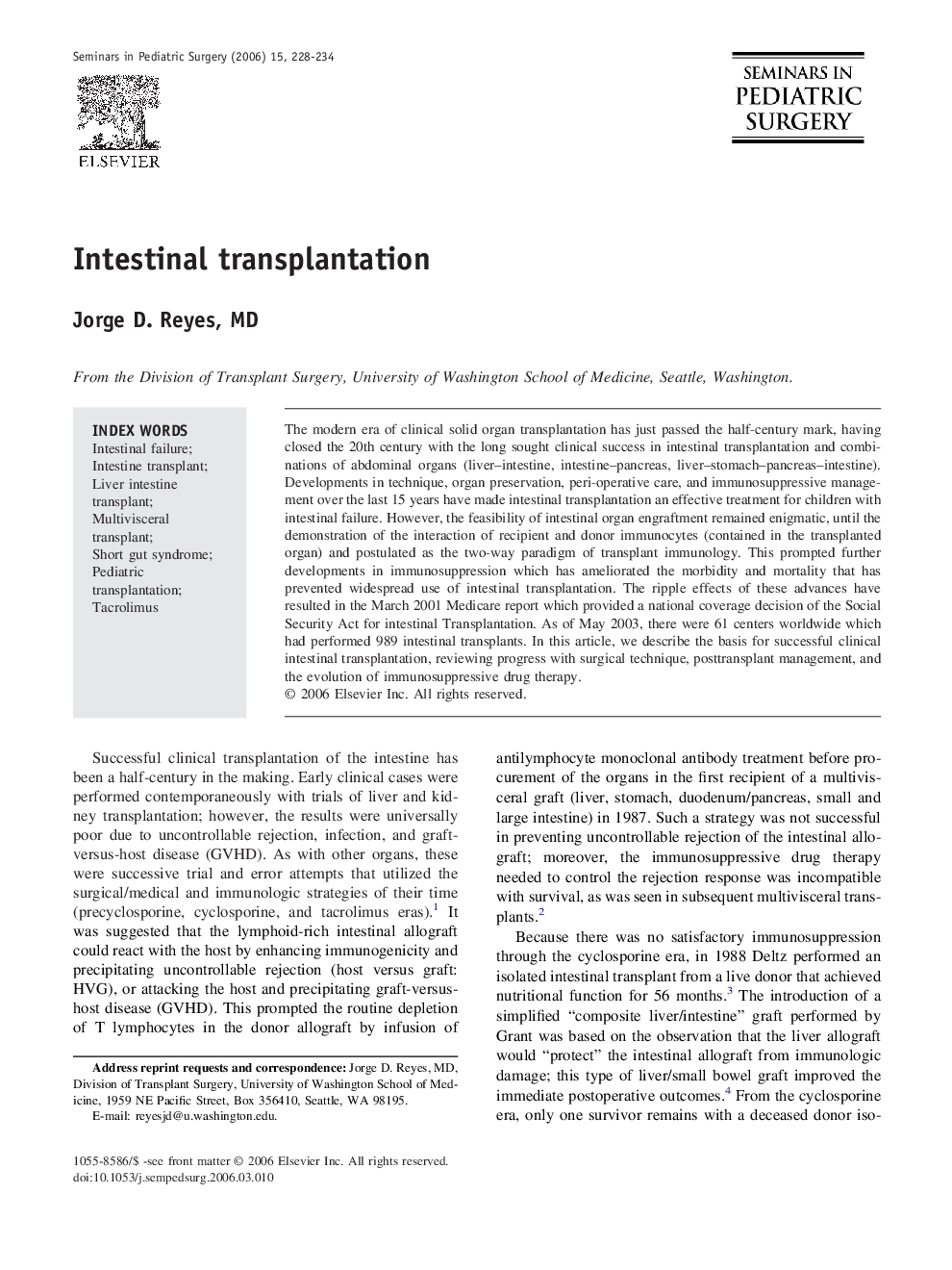| Article ID | Journal | Published Year | Pages | File Type |
|---|---|---|---|---|
| 4176995 | Seminars in Pediatric Surgery | 2006 | 7 Pages |
The modern era of clinical solid organ transplantation has just passed the half-century mark, having closed the 20th century with the long sought clinical success in intestinal transplantation and combinations of abdominal organs (liver–intestine, intestine–pancreas, liver–stomach–pancreas–intestine). Developments in technique, organ preservation, peri-operative care, and immunosuppressive management over the last 15 years have made intestinal transplantation an effective treatment for children with intestinal failure. However, the feasibility of intestinal organ engraftment remained enigmatic, until the demonstration of the interaction of recipient and donor immunocytes (contained in the transplanted organ) and postulated as the two-way paradigm of transplant immunology. This prompted further developments in immunosuppression which has ameliorated the morbidity and mortality that has prevented widespread use of intestinal transplantation. The ripple effects of these advances have resulted in the March 2001 Medicare report which provided a national coverage decision of the Social Security Act for intestinal Transplantation. As of May 2003, there were 61 centers worldwide which had performed 989 intestinal transplants. In this article, we describe the basis for successful clinical intestinal transplantation, reviewing progress with surgical technique, posttransplant management, and the evolution of immunosuppressive drug therapy.
